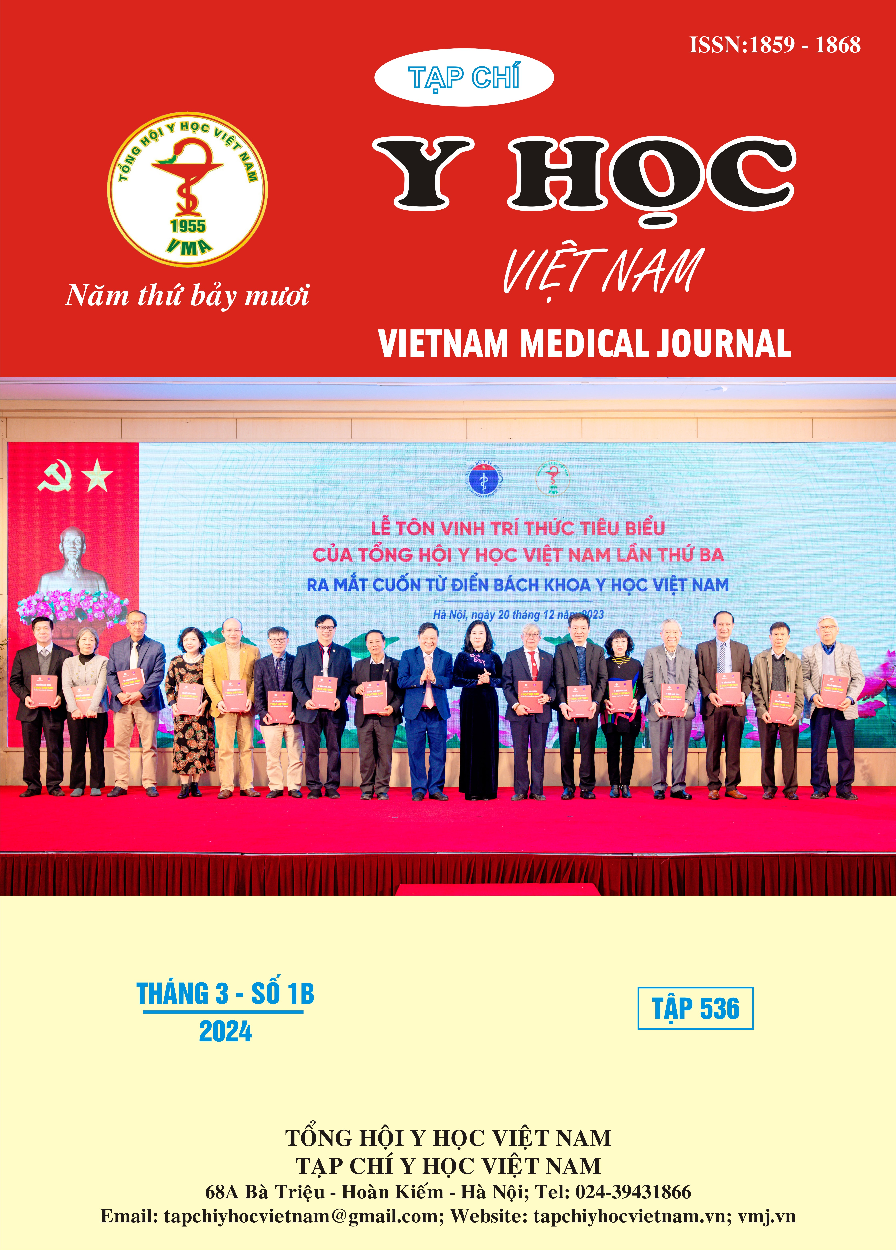EVALUATION OF BONE HEALING IN SEGMENTAL BONE DEFECTS TREATMENT IN RABBITS WITH A MIXTURE OF AUTOLOGOUS BONE GRAFT AND TRICALCIUM-PHOSPHATE USING THE MODIFIED MASQUELET TECHNIQUE
Main Article Content
Abstract
Objectives: Segmental bone defects of more than 5cm can be treated by Masquelet with a high rate of bone healing. Most autologous bone grafts in this technique are harvested from the iliac crest. However, in the case of critical bone defect, which requires a lot of grafted bone volume, autologous bone grafts may have to be harvested from many different locations. Therefore, the use of both cortical and cancellous bones in the anterior iliac crest mixed with bone substitute material is considered an option. However, the ability to heal bones when using this mixture is still controversial. Therefore, the aim of this study was to assess bone healing with using both cortical and cancellous of autologous bone grafts mixed with tricalcium-phosphate (TCP) bone substitute. Methods: 12 mature rabbits were studied. A 10mm segmental bone loss was created at radius bone in left side of anterior limb. Then this defect was filled in with polymethyl-methacrylate (PMMA) cement mixed with the antibiotic Vancomycin. After 6-8 weeks, the cement spacer was removed, and the bone gap was filled with the iliac crest bone of the rabbit mixed with TCP at a volume ratio of 2 parts of the iliac crest and 1 part of TCP. Bone healing results are evaluated on clinical, X-rays images after 1,2,3 months, and after 3 months from the time of bone grafting, the bone graft area would be removed, and Hematoxylin and Eosin (H&E) stained for histology. Results: The 12 rabbits all had an induced membrane formation around the cement spacer at stage II, and all achieved bone healing on both X-ray and clinical after 3 months of bone grafting. In which, bone healing on X-ray observed after bone grafting at the first month with 1/12 case, at the second month with 4/12 cases and at the third month with 7/12 cases. Conclusion: Bone healing is still achieved when using a mixture of autologous bone graft and TCP bone substitute material, with a corresponding 2:1 ratio for segmental bone defect management by modified Masquet technique.
Article Details
References
2. Inglis. S, Strunk. A. Rabbit anesthesia. Lab Animal. 2009;38(3):84-85.
3. Mauffrey C, Brian Thomas Barlow, Wade Smith. Management of Segmental Bone Defects. J Am Acad Orthop Surg. 2015;23(3):143-153. doi: 10.5435/
4. Fung B, Hoit G, Schemitsch E, al. e. The induced membrance technique for the management of long bone defects. JBJS. 2020; 102 (12): 1723-1734. doi: 10.1302/0301-620X. 102B12
5. Wang X, Luo F, Huang K, al. e. Induced membrane technique for the treatment of bone defects due to post-traumatic osteomyelitis. Bone Joint Res. 2016;5(3):101-5. doi:10.1302/2046-3758.53.2000487
6. Taylor BC, Bruce G. French, al. e. Induced Membrane Technique for Reconstruction To Manage Bone Loss. J Am Acad Orthop Surg. 2012;20(3):142-150. doi:10.5435/
7. Hoit G, Kain MS, Sparkman JW, al. e. The induced membrane technique for bone defects: Basic science, clinical evidence, and technical tips. OTA International: The Open Access Journal of Orthopaedic Trauma. 2021;4(2S): e106. doi:10. 1097/oi9.0000000000000106
8. Masquelet AC. IM tech-pear and pitfall. J Orthop Trauma. 2017;31(10):S36-S38. doi:10.1097/BOT. 0000000000000979
9. Meng ZL, Wu ZQ, Shen BX, et al. Reconstruction of large segmental bone defects in rabbit using the Masquelet technique with alpha-calcium sulfate hemihydrate. J Orthop Surg Res. 2019;14(1):192. doi:10.1186/s13018-019-1235-5


